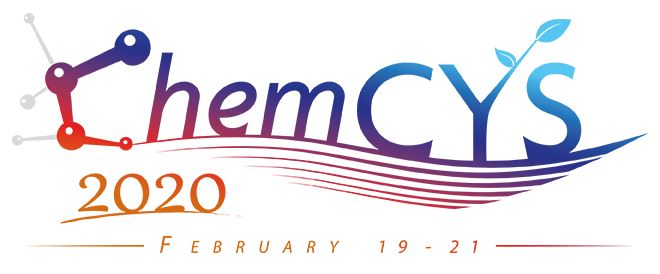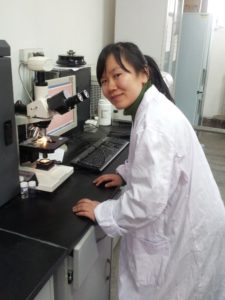Looking back at 2019, we would like to highlight some of the great research that has been published in RSC Advances over the year. We are proud to present a selection of the most popular 2019 articles published on hydrogels so far.
We hope you enjoy reading these articles – free to read and accessible to everyone.
Happy New Year from the RSC Advances team!
Gelatin methacryloyl (GelMA)-based biomaterials for bone regeneration
Zhenqiang Dong, Qijuan Yuan, Keqing Huang, Wanli Xu, Guiting Liu and Zhipeng Gu
RSC Adv., 2019,9, 17737-17744. DOI: 10.1039/c9ra02695a
Review
A facile preparation method for new two-component supramolecular hydrogels and their performances in adsorption, catalysis, and stimuli-response
Junlin Zhu, Ran Wang, Rui Geng, Xuan Zhang, Fan Wang, Tifeng Jiao, Jingyue Yang, Zhenhua Bai and Qiuming Peng
RSC Adv., 2019,9, 22551-22558. DOI: 10.1039/c9ra03827b
Development and application of novel bio-magnetic membrane capsules for the removal of the cationic dye malachite green in wastewater treatment
Imran Ali, Changsheng Peng, Iffat Naz, Dichu Lin, Devendra P. Saroj and Mohsin Ali
RSC Adv., 2019,9, 3625-3646. DOI: 10.1039/c8ra09275c
Strategy to construct polyzwitterionic hydrogel coating with antifouling, drag-reducing and weak swelling performance
Jiajia Shen, Miao Du, Ziliang Wu, Yihu Song and Qiang Zheng
RSC Adv., 2019,9, 2081-2091. DOI: 10.1039/c8ra09358j
Non-thermal plasma assisted surface nano-textured carboxymethyl guar gum/chitosan hydrogels for biomedical applications
Ganeswar Dalei, Subhraseema Das and Smruti Prava Das
RSC Adv., 2019,9, 1705-1716. DOI: 10.1039/c8ra09161g
Thermal- and salt-activated shape memory hydrogels based on a gelatin/polyacrylamide double network
Fang Chen, Kaixiang Yang, Dinglei Zhao and Haiyang Yang
RSC Adv., 2019,9, 18619-18626. DOI: 10.1039/c9ra02842k
Poly(ethylene glycol) brush-b-poly(N-vinylpyrrolidone)-based double hydrophilic block copolymer particles crosslinked via crystalline α-cyclodextrin domains
Noah Al Nakeeb, Zdravko Kochovski, Tingting Li, Youjia Zhang, Yan Lu and Bernhard V. K. J. Schmidt
RSC Adv., 2019,9, 4993-5001. DOI: 10.1039/c8ra10672j
Stretchable self-healing hydrogels capable of heavy metal ion scavenging
Dandan Song, Beibei Kang, Zengdian Zhao and Shasha Song
RSC Adv., 2019,9, 19039-19047. DOI: 10.1039/c9ra03443a
Preparation of a poly(acrylic acid) based hydrogel with fast adsorption rate and high adsorption capacity for the removal of cationic dyes
Zhenyu Yuan, Jie Wang, Yiming Wang, Qian Liu, Yujie Zhong, Yu Wang, Li Li, Stephen F. Lincoln and Xuhong Guo
RSC Adv., 2019,9, 21075-21085. DOI: 10.1039/c9ra03077h
Thermosensitive double network of zwitterionic polymers for controlled mechanical strength of hydrogels
Wei-Hsin Hsu, Yu-Chih Kao, Shun-Hao Chuang, Jun-Sheng Wang, Juin-Yih Lai and Hsieh-Chih Tsai
RSC Adv., 2019,9, 24241-24247. DOI: 10.1039/c9ra03834e
Self-healing zwitterionic sulfobetaine nanocomposite hydrogels with good mechanical properties
Yinlei Lin, Zheng Zeng, Yuhao Li, Sheng Sun, Xiaoting Liu, Deliu He and Guangji Li
RSC Adv., 2019,9, 31806-31811. DOI: 10.1039/c9ra06728k
Direct 3D printing of a graphene oxide hydrogel for fabrication of a high areal specific capacitance microsupercapacitor
Xiawei Yun, Bingchuan Lu, Zhiyuan Xiong, Bo Jia, Bo Tang, Henan Mao, Ting Zhang and Xiaogong Wang
RSC Adv., 2019,9, 29384-29395. DOI: 10.1039/c9ra04882k
Hybrid cellulose nanocrystal/alginate/gelatin scaffold with improved mechanical properties and guided wound healing
Yue Shan, Chaoyue Li, Yongzhi Wu, Qiwen Li and Jinfeng Liao
RSC Adv., 2019,9, 22966-22979. DOI: 10.1039/c9ra04026a
3D printable SiO2 nanoparticle ink for patient specific bone regeneration
Uday Kiran Roopavath, Raghav Soni, Urbashi Mahanta, Atul Suresh Deshpande and Subha Narayan Rath
RSC Adv., 2019,9, 23832-23842. DOI: 10.1039/c9ra03641e
Gallic acid-functionalized graphene hydrogel as adsorbent for removal of chromium (III) and organic dye pollutants from tannery wastewater
Gongyan Liu, Ruiquan Yu, Tianxiang Lan, Zheng Liu, Peng Zhang and Ruifeng Liang
RSC Adv., 2019,9, 27060-27068. DOI: 10.1039/c9ra05664e

Submit to RSC Advances today! Check out our author guidelines for information on our article types or find out more about the advantages of publishing in a Royal Society of Chemistry journal.
Keep up to date with our latest HOT articles, Reviews, Collections & more by following us on Twitter. You can also keep informed by signing up to our E-Alerts.
Comments Off on Hydrogels – The year in review




















